Specification
| Item | Specification |
| Rated Voltage (V) | 12 |
| Operating Voltage (V) | 9 - 16 |
| Quantity | 2 units |
| Max. distance (m) | 60 |
Troubleshooting
On Vehicle Inspection
If there is a problem with BCW / BCA / SEA / RCCW / RCCA, check the items below.1.Checking bumper cleanliness: If the bumper is contaminated with snow or dust, performance will be reduced.
2.Check the condition around the bumper: Warning lights may occur if metal stickers or foreign substances are attached to the radar.
3.Checking bumper geometry or mounting status: Warning lights may occur if bumper or radar is not properly installed after an accident.
4.Check the bumper, radar bracket, or radar when a fault code occurs.
• Bumper : Mounting state, bumper external deformation.
• Radar bracket : Mounting status, radar bracket deformation.
• Radar : Poor radar nut engagement, radar debris contamination.
5.Check the operation status of the switch: Press the switch to check whether the LED works.
Diagnostic Faults Using KDS
1.The Advanced driver assistance system driving can be more quickly diagnosed for problems by using the KDS (Refer to "DTC guide").
(1)Self diagnosis : Inspection and display failed code (DTC)
(2)Sensor data : Checks the system input / output values
(3)Forced operation : Checking the system operation condition
(4)Additional function : Controlling other features including system option setting and zero point adjustment
Removal

• When working on high voltage system, the work should be carried by technicians who have completed the relevant training. A lack of understanding of the high voltage system can lead to serious accidents due to electric shock or electric leakage.
• When working a high voltage system, the technician must be observed and aware of "High Voltage System General Safety Information and Caution". If not, it may cause serious accidents such as electric shock or short circuit.
• When working on high voltage system, make sure to check the Personal Protective Equipment (PPE) and high voltage shut-off procedures.
Rear Corner Radar
[Standard]
1.Disconnect the battery negative ( - ) terminal and the service interlock connector.(Refer to Battery Control System - "Auxiliary 12 V Battery - 2WD")(Refer to Battery Control System - "Auxiliary 12 V Battery - 4WD")
2.Remove the rear bumper assembly.(Refer to Body - "Rear Bumper Assembly")
3.Remove the rear corner radar.
(1)Disconnect the rear corner radar connector (B) after removing the wiring clip (C).
(2)Remove the rear corner radar assembly (A) after removing the screws.
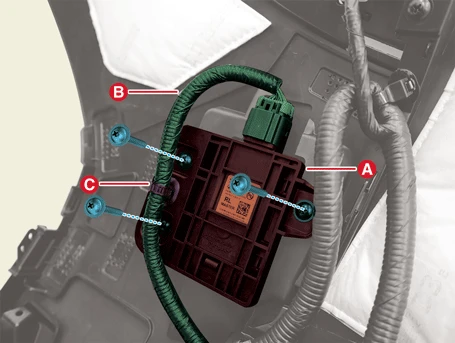
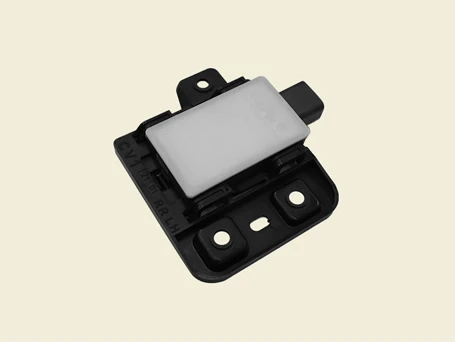

• If the bracket is deformed or damaged, the rear corner radar will not operate normally.
• Be careful not to damage the bracket when removing the rear corner radar.
[Option]
1.Disconnect the battery negative ( - ) terminal and the service interlock connector.(Refer to Battery Control System - "Auxiliary 12 V Battery - 2WD")(Refer to Battery Control System - "Auxiliary 12 V Battery - 4WD")
2.Disconnect the rear corner radar connector (A).
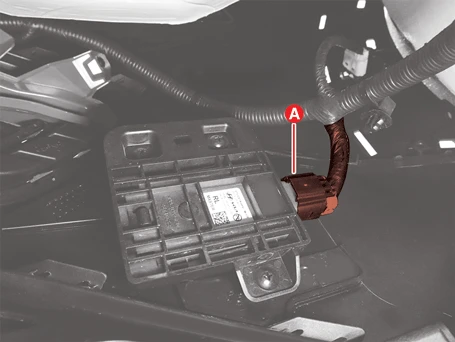
3.Remove the rear corner radar (A) after removing the screws.
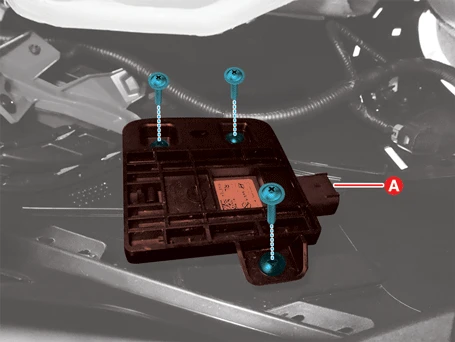
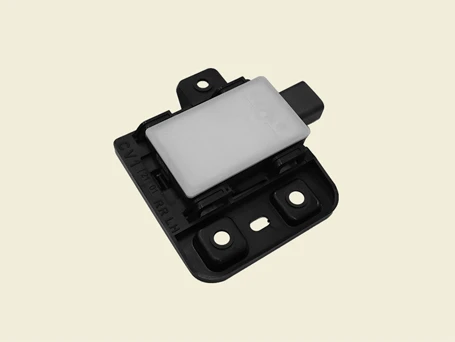

• If the bracket is deformed or damaged, the rear corner radar will not operate normally.
• Be careful not to damage the bracket when removing the rear corner radar.
BCW & RCCW indicator
1.Disconnect the battery negative ( - ) terminal and the service interlock connector.(Refer to Battery Control System - "Auxiliary 12 V Battery - 2WD")(Refer to Battery Control System - "Auxiliary 12 V Battery - 4WD")
2.After inserting the remover as shown in the illustration below, remove the mirror (A) by applying slight force.
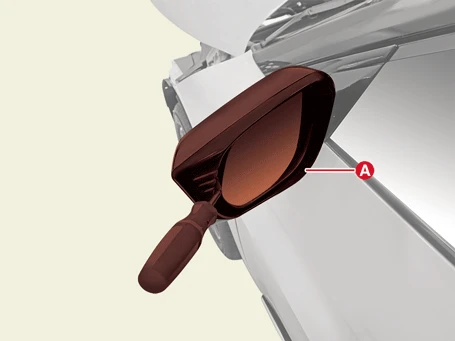

• Wear gloves to protect hands from injury.
• Do not insert the tool too deeply.
• When assembling the outside rear view mirror assembly, be careful the heater and BCW wires do not interfere.
3.Disconnect the rear corner radar indicator connector (B) and mirror heater connectors (A).
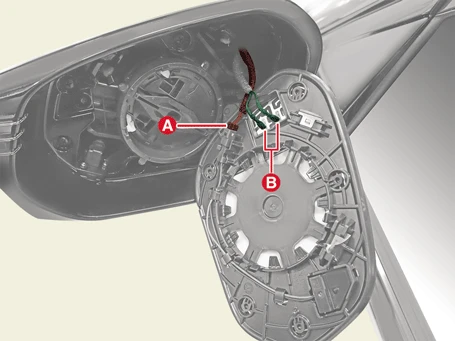
Installation

• When working on high voltage system, the work should be carried by technicians who have completed the relevant training. A lack of understanding of the high voltage system can lead to serious accidents due to electric shock or electric leakage.
• When working a high voltage system, the technician must be observed and aware of "High Voltage System General Safety Information and Caution". If not, it may cause serious accidents such as electric shock or short circuit.
• When working on high voltage system, make sure to check the Personal Protective Equipment (PPE) and high voltage shut-off procedures.
Rear Corner Radar
1.Install in the reverse order of removal.

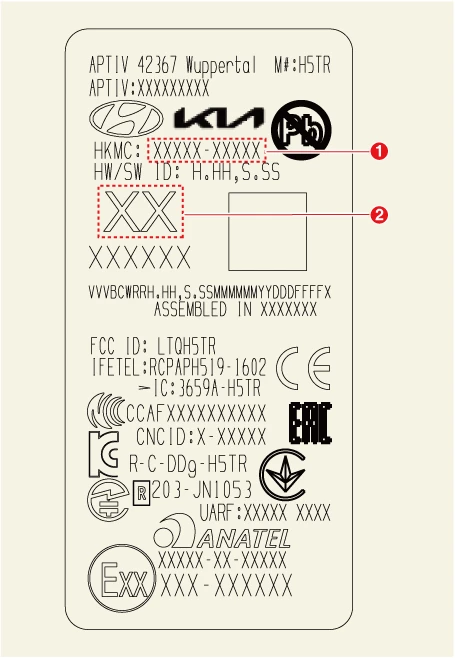
2.If the rear corner radar unit is replaced with a new one, perform the variant coding procedure by using the KDS.
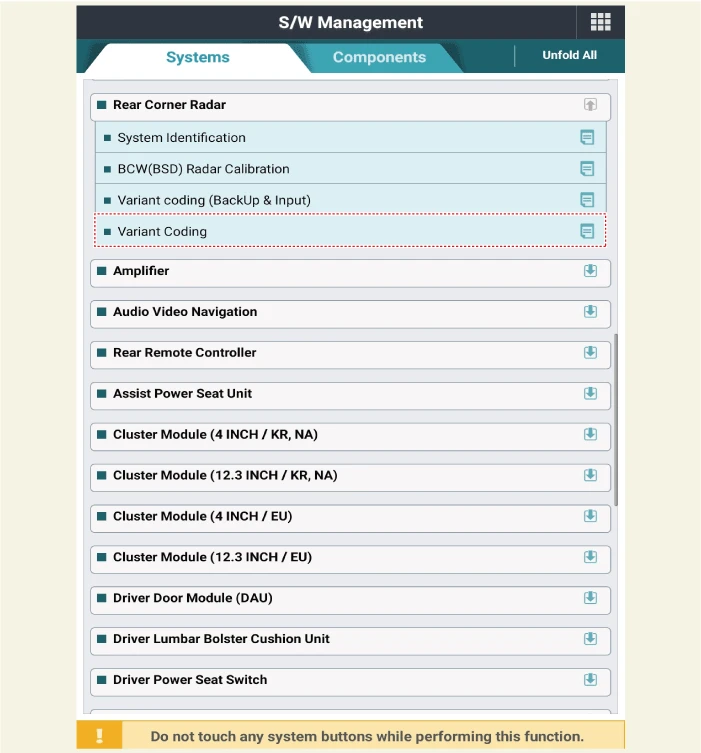
3.Perform the rear corner radar calibration procedures.
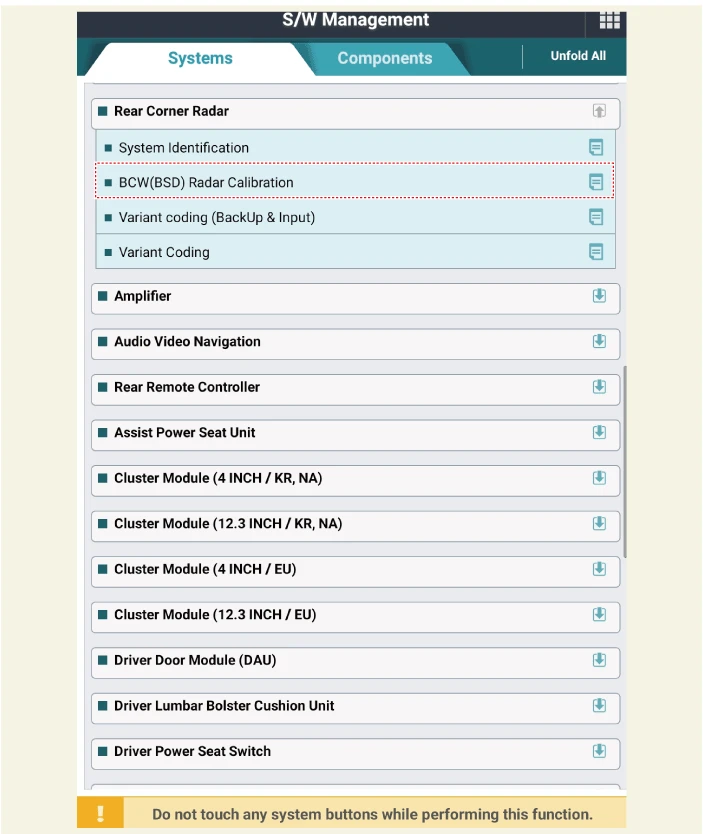
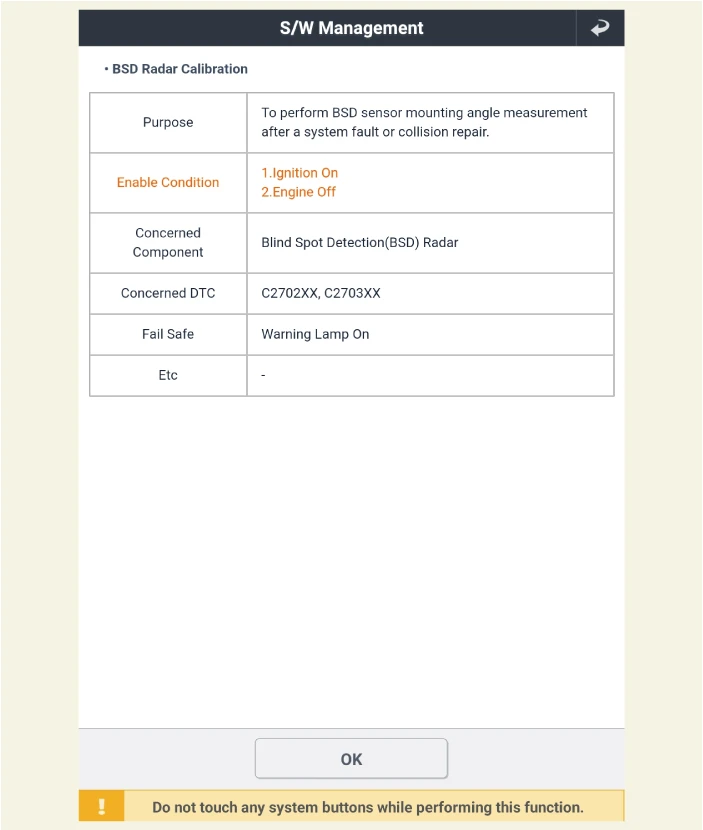

BCW & RCCW indicator
1.Install in the reverse order of removal.